Six years ago, in a season where autumn was approaching, and the remnants of summer still lingered, I, as a professional volunteer from the "San Shi" initiative in the province, set foot on an ancient path for the first time (specifically, the Raoping West Ancient Path and the Qilin Ridge Ancient Path). Ascending the millennia-old steps, I was immediately embraced by the aura of history and the refreshing embrace of nature. In that moment, I was deeply captivated by the ancient path's legacy of history and the gifts of nature. Since then, I have had the great honor of serving as a professional volunteer for the "San Shi" initiative in the province for six consecutive years. I also led the work guidance team for the South Guangdong Ancient Postroad's key routes, making over 50 on-site visits and fieldwork. I have provided guidance for the Raoping West Ancient Path, Qilin Ridge Ancient Path, Heyuan to Ganzhou Ancient Path, Shanwei Yangtieling Ancient Path, Huizhou Huidong Gaotan Ancient Path, Yunfu Yunan Nanjiang Ancient Waterway, and Zhaoqing Fengkai Xiaohedu Ancient Path preservation and utilization projects. With every step, I have measured the beauty of the South Guangdong Ancient Postroad.
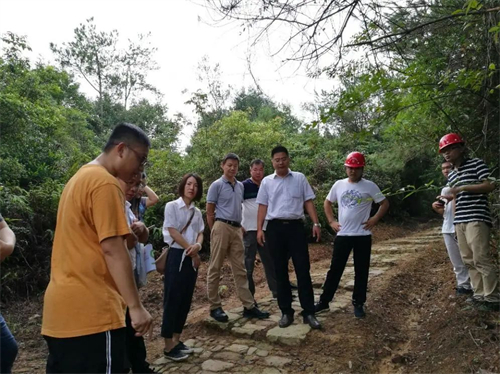
Supervision and technical guidance in 2018 at Dongyuan Yuegan Ancient Road, Heyuan.
Currently, the province has established an extensive South Guangdong Ancient Postroad network, covering 18 cities and 31 counties (districts), with a total length of over 1,200 kilometers. This network connects and integrates various resources along the ancient postroads, unearths a wealth of revolutionary stories, restores and connects numerous revolutionary sites, and creates diverse themed routes. It has effectively transformed the region into an open-air natural history museum, providing high-quality ecological products for the local residents. Furthermore, the initiative has facilitated the integration of cultural, sports, tourism, and agricultural elements, leading to the ongoing organization of cultural and creative competitions, orienteering races, art and painting competitions for rural children, as well as other cultural exhibitions and events. This has brought an influx of visitors, financial support, and new concepts to the countryside, boosting rural cultural confidence, improving the living environment, and injecting new vitality into rural revitalization and holistic tourism.
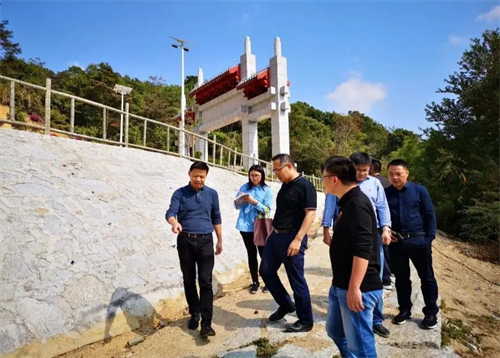
Supervision and technical guidance in 2019 on the Gao Tan ancient road in Huizhou Huidong.
During these six years, I have had the privilege of personally witnessing the transformation of these ancient postroads from a state of dormancy to one teeming with vitality. Each posthouse and station has gone from being idle to becoming popular tourist destinations. Numerous villages and towns have shifted from relative obscurity to a constant stream of visitors. I have genuinely experienced the wholehearted support of the local residents for this initiative and have seen the remarkable results of "Revitalizing Villages and Guangdong through the Ancient Postroads."As a long-time urban and rural planning professional rooted in Guangdong, I have witnessed over 20 years of development in urban and rural planning and construction in the province. I have been involved in the formulation and implementation of more than a hundred planning projects. However, regarding the conservation and utilization of the South Guangdong Ancient Postroad, I believe it holds great value and significance for the economic, social, and cultural development of Guangdong. My insights are mainly as follows.
1.The South Guangdong Ancient Postroad is a tremendous treasure within the land and spatial framework of Guangdong.
Guangdong, with its northern border along the Nanling Mountains and southern coastline adjacent to the South China Sea, exhibits a distinctive territorial landscape that transitions from mountains in the north to cities and ultimately the sea in the south. Building upon this unique "mountains-cities-sea" structure and driven by the transformative forces of economic reform and opening up, Guangdong has consistently maintained a fast track of development, attaining remarkable and significant achievements. According to the most recent relevant planning, Guangdong has charted a world-class urban agglomeration layout for the next fifteen years, known as the "One Core, One Zone, One Area, and Five Rings" model.
Over the course of more than six years, innovative models have been continuously applied, combining the ancient postroads with historical and cultural elements, health and sports activities, holistic tourism, ecological towns, distinctive agriculture, the Belt and Road Initiative, and urban-rural integration. These efforts center around promoting green development, enhancing the vitality within areas along the ancient postroads, and facilitating the growth of ecological industries.
Following the principles of elevating beautiful rural areas, fostering cultural and creative innovation, leading with distinctive industries, propelling significant projects, and promoting eco-friendly tourism, the development of integrated towns that blend urban and rural elements has been carried out. Through forms such as cultural creativity, sports competitions, hotels and homestays, health and wellness programs, vacation and leisure activities, agricultural experiences, tourism products, and agricultural product processing, spatial integration of urban and rural areas has been achieved, driving green development and creating a harmonious synergy between the past and the present, all while facilitating the transformation of energy dynamics.
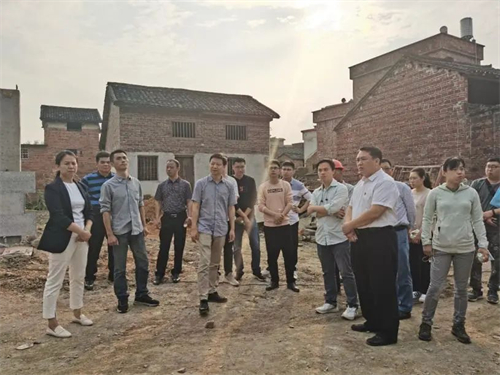
Supervision and technical guidance in 2020 at the South China Education and History Study Base in Lianzhou, Qingyuan.
As National Committee member of the Chinese People's Political Consultative Conference (CPPCC), Vice Chairman of the China Writers Association, and Chairman of the Beijing Writers Association, Liu Heng aptly stated, "The South Guangdong Ancient Postroad is a treasure of space, and when you add time and history to it, it becomes a book, or perhaps an open-air museum." The South Guangdong Ancient Postroad aligns significantly with strategic initiatives of the new era in China, such as ecological civilization, rural revitalization, and cultural renaissance. It stands as a substantial asset within Guangdong's territorial space, making it the most promising economic corridor for the development of ecological industries. This initiative plays a pivotal role in addressing issues of regional imbalances and disparities in Guangdong, bridging the gap between the eastern and western parts of the province and the Pearl River Delta, and converting ecological resources into industrial advantages. It serves as the engine for green and innovative development, fostering an innovative ecological system and setting the course for the resurgence of the South Guangdong Ancient Postroad. From this perspective, the conservation and utilization of the South Guangdong Ancient Postroad is not only a historical necessity but also an imperative for our times!
2.The conservation and utilization model of the South Guangdong Ancient Postroad provides a new approach to addressing issues of regional imbalance and inadequacy in development, aligning with the heartfelt aspirations of the local residents.
The stagecoach routes are carriers focusing on the countryside. The fundamental starting point of the conservation and utilisation of the Southern Guangdong Ancient Post Road is to help revitalise the countryside, the starting point is to promote farmers' income generation, and the important purpose is to provide quality public ecological products for the public. From the perspective of work content, taking into account the historical function and contemporary value of the ancient stagecoach routes, the overall space and complete history, the "body" is the key to attracting tourists to the core, insisting on the use of the past for the present, embodied in the restoration of the old as in the past; the "connecting line" is to achieve the ancient stagecoach routes. The "connecting line" is the basis for realising the "string of pearls into a chain", and it is the vein that connects villages, industries, existing nodes, as well as extends and expands the influence of the ancient stagecoach route; the "activities and events" is the key to create the overall brand of the "Southern Guangdong Ancient Stagecoach Route", and bring prosperity to the ancient stagecoach route. Activities and events" is the key point, which is an important carrier to build the overall brand of "Southern Guangdong Ancient Post Road", to boost the popularity of villages, and to establish the flow of information and material flow.
Looking back over the past six years of work on the ancient postroads, it becomes evident that by reusing the ancient heritage for the present, connecting villages like a string of pearls, and deeply developing the brand, the unique spatial advantages and development model have attracted policy and financial support from various provincial government departments. The South Guangdong Ancient Postroad has established a tripartite relationship with rural areas, characterized by strategic symbiosis, economic complementarity, and spatial linkage. These two elements are guided by "strategic symbiosis," lay out their plans through "spatial linkage," and ensure mutual economic support through "economic complementarity." This interactive connection results in a virtuous cycle with the ancient postroad as the carrier, focusing on rural development. Based on the creative concept of "revitalizing villages through the ancient postroads," four specific development modes have been formed: revitalizing villages through "culture," "agriculture," "tourism," and "residence."
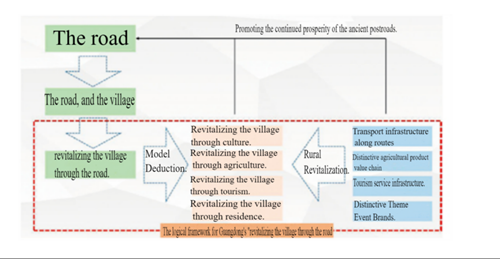
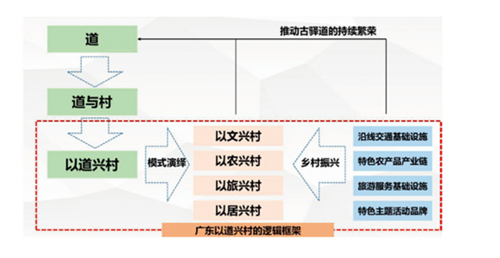
In the guidance and preservation of the ancient postroads, we often encounter local residents along the routes, and we frequently hear their interesting stories about the historical significance of these old pathways and their feelings about the restoration efforts. For instance, in the Qilin Ridge Ancient Path in Raoping, Chaozhou, a local villager once shared, "In the past, there weren't any decent recreational places around here. Now that the Qilin Ridge Ancient Path entrance plaza has been built, we bring our kids there almost every afternoon to relax and play." They also added, "After the ancient path was completed, there was a lot of landscaping done in the area connecting the village to the ancient path. It's much easier to walk the ancient path now. Many people come there for morning and evening exercises, strolls, and even tourists from outside who sometimes buy our local products."
In the guidance for the Southern China Education History Research Base in Lianzhou and the Xiang-Yue Ancient Path, we discovered that originally, in West Tang Village in Dongbei Town, most of the villagers primarily engaged in farming, with the younger generation working outside the village. There were no substantial local industries, and self-employment was minimal. However, after the project was implemented, we found that two or three potential investors are considering opening agrotourism businesses in the village by utilizing vacant farmhouses.
One notable example is Mr. Chen Renping, a "large-scale grain grower" in West Tang Village, whose primary source of income comes from rice cultivation. As the number of visitors coming to the village for educational tours and sightseeing gradually increased, tourists developed a keen interest in the rice cultivation and his eco-friendly rice. They often approached him to purchase rice, sweet potatoes, and other products. His income also saw a significant increase. Through the preservation and utilization of the ancient postroads and the Southern China research base, historical and cultural aspects that were previously known only to a few elderly villagers have become widely recognized. The village's rich cultural heritage and spirit are now represented by visible structures, signs, and informational boards. As a result, the villagers' pride in their local culture and their sense of belonging have greatly enhanced.
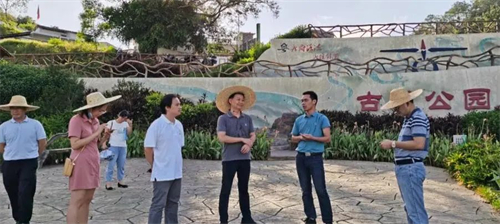
In 2021, supervision and technical guidance were carried out for the Xiahe Ancient Path in Fengkai.
3.Leveraging the South Guangdong Ancient Postroad as a platform to connect the overall territorial landscape, constructing the Lingnan Charm System represents the "way forward" for the future development of Guangdong.
Guangdong's linear spatial development begins with greenways, and the combination of the ancient postroads with cultural routes and the cultural renaissance, and rural revitalization has enriched the essence of Guangdong's linear open spaces. What's even more significant is that in recent years, our province has used greenways and the South Guangdong Ancient Postroad as the spatial foundation to carry out linear spatial planning and development work, including cultural heritage trails in the Greater Bay Area of Guangdong, Hong Kong, and Macau, the Wanli Bide Trail, and the Wanli Hongdao Trail. These initiatives have laid the foundation for the development of a comprehensive framework for the linear spatial network system in southern China.
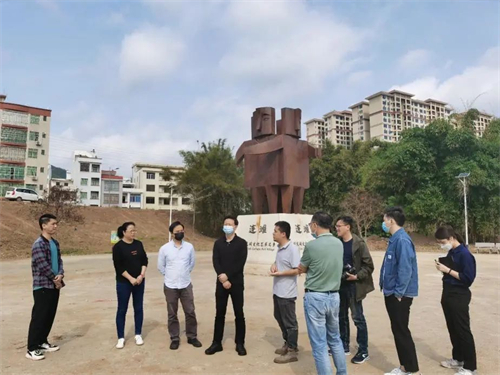
In 2022, supervision and technical guidance were conducted for the Nanjiang Ancient Waterway in Yunnan.
Historically, the Southern Guangdong Ancient Stagecoach Route had a brilliant culture, a prosperous economy, the footprints of the Red Revolution, the imprints of celebrities and anecdotes, and the memories of nostalgia of travellers. In reality, the Southern Guangdong Ancient Post Road connects the city and the countryside, history and the future, human habitat and natural ecology, and it is the most representative linear cultural space network system in Guangdong, which connects the natural charm system, humanistic charm system and urban-rural charm system. Looking into the future, the Southern Guangdong Ancient Post Road takes the innovative development of eco-industry as its engine, integrates multiple elements such as culture, sports, tourism and agriculture, and links the three major spaces of production, life and ecology, thus smoothing the flow of information and energy between cities and villages. According to the requirements of "Guangdong Province Land Space Planning (2020-2035)" (public version), it is proposed to highlight the regional landscape background, highlight the characteristics of the Lingnan watershed, protect and inherit the history and culture, and enhance the urban and rural characteristics of the charm of poetic habitat home, in which the ancient stagecoach routes of Southern Guangdong should be an important spatial carrier. "Historical and cultural heritage is a precious resource that is non-renewable and irreplaceable, and protection should always be put in the first place." As a high-quality historical and cultural resource in our province, the NanYue Ancient Post Road should be carried out persistently, developed in protection and protected in development, so that the cultural relics on display, the sleeping words, and the deposited heritage will come alive, so that history and culture will further come into thousands of households, so that history will intermingle with modernity, and so that we can continue to write more "spring stories" for Guangdong by taking practical actions. Contribute to the continuation of more "spring stories" in Guangdong through practical actions.
The Southern Guangdong Ancient Post Road is not only a road, it is also a kind of "thinking way" for Guangdong's rural revitalisation, and the world is wider with a change of thinking; it also buttresses the "heart road" of Guangdong people, making history and culture accessible; of course, it also foretells the "way out" of Guangdong's future. Of course, it also predicts the future of Guangdong's "way out", and there is no stopping point for high-quality development.
(Originally published in the public number "Guangdong Province Three Divisions Professional Volunteer Association" by Qiu Yanqing, compiled and edited by South China Historical Trail Network. If there are any copyright issues, please contact South China Historical Trail.com)
责任编辑:周文娟